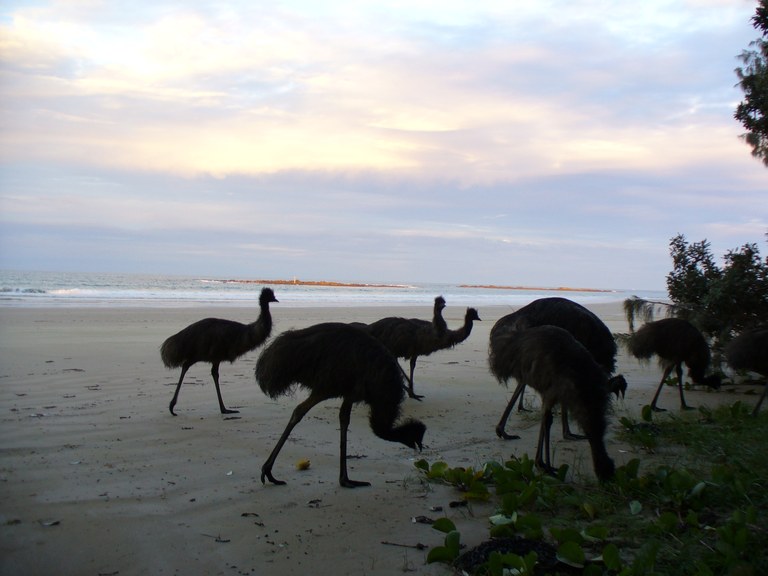
Help map emu genetics
Published 5 February 2016. Vehicle strikes, pigs, wild dogs and predation of young birds by foxes have all contributed to the decline of the Coastal Emu population on the NSW North Coast. But a conservation project is seeking to avoid the extinction, which on current trends is fast approaching, and you can help...
Vehicle strikes, pigs, wild dogs and predation of young birds by foxes have all contributed to the decline of the Coastal Emu population on the NSW North Coast. But a conservation project is seeking to avoid the extinction, which on current trends is fast approaching, and you can help.
“The population is estimated around 100 birds and their range has steadily declined over the last 15 years.” said National Parks and Wildlife Service Ranger, Gina Hart.
“It's getting to the point where we are trying to establish if the population is viable.” she continued.
NPWS in conjunction with the Clarence Environment Centre are collecting emu feathers from across inland eastern Australia in order to examine patterns of dispersal and gene flow. The genetic comparison project has been generously funded by the Norman Wettenhall Foundation.
Part of this work involves mapping the genetics of the endangered Coastal Emu population. The project team are urgently seeking emu feather samples from west of the Great Dividing Range.
“There is a suggestion that, because of their isolation, this population is genetically diverse.” said Ms Hart.
The genetic data has important implications for Coastal Emu conservation and will inform decisions on translocation and release into the wild.
If you come across any emu feathers or road kill – a feather sample would be greatly appreciated.
Feathers can be collected off a fence or a carcass: preferably a bunch of 4-5 feathers with base of feather intact; any tissue attached to the base of the feather should be included; avoid touching the base of the feathers.
Please post in a paper envelope with locality/ GR or Lat/long/ Date and collector, to:
Dr Shannon M Smith
Hawkesbury Institute for the Environment
UWS Hawkesbury Campus
Locked Bag 1797
Penrith NSW 2751 Australia
If you would like any further information about the project, please contact Gina Hart: gina.hart@environment.nsw.gov.au.




